Books
Books

Little Sisters and Other Stories
Selected short stories by one of the most acclaimed voices in post-war US American science fiction.
This volume presents a selection of short fiction by Vonda Neel McIntyre (1948–2019), one of the most acclaimed writers of post-war US American science fiction, and the winner of multiple awards for both novels and short fiction.
These stories, which span the whole of McIntyre's career, show the broad range of her interests and her voice, taking us from bleak dystopian worlds on the verge of environmental collapse to baroque intergalactic civilizations populated by genetically modified humans, from cries for freedom to sharp-eyed satire to meditations on aging. Throughout run her distinctive themes of gender and power dynamics, human and species diversity, and a pragmatic utopianism that emphasises our mutual dependency.
The stories included in the volume are: "Breaking Point," "Thanatos," "Shadows, Moving," "Elfleda," "A Story for Eilonwy," "Malheur Maar," "The Adventure of the Field Theorems," "Little Faces", "Little Sisters," and "XYY" (previously unpublished).
Vonda Neel McIntyre (1948–2019) was one of the most acclaimed voices in US American science fiction from the 1960s onwards. A novelist, short story writer, essayist, and critic, she won her first Hugo Award in 1973 for her novella "Of Mist, and Grass, and Sand." This formed part of her ground-breaking feminist novel Dreamsnake (1978), which won both the Hugo and the Nebula Award. A later novel, The Moon and the Sun, won the Nebula in 1997. McIntyre contributed extensively to debates within the US sf community over the role of women in science fiction, and was instrumental in founding the Clarion West Writers Workshop for novice sf writers. A final novel, The Curve of the World, was completed shortly before her death.

Merchant
A post-apocalyptic retelling of William Shakespeare's The Merchant of Venice.
Who will survive when the world is destroyed? Can stories from the distant past teach us how to change a dismal present? Merchant shifts perspective between three survivors of a flooded world as they try to navigate the threat of mass starvation; Jessica, a patrilineal Jew from Venice (named after the Italian city but located on the mountain K2) who has memorized the complete works of Shakespeare; Cem, an orphan of Venice; and Shinobu, an advisor to the empress Ama in Fuji. Ama has been gifting edible algae blocks to nations worldwide, but Jessica's arrival in Fuji to beg for more food for Venice upsets the delicate international balance Shinobu has been maintaining. As a series of buried secrets and miscommunications carry consequences of potential global destruction, everyone must determine what they are willing to do to survive in a hopeless world.
Alexandra Grunberg attended New York University's Tisch School of the Arts earning a BFA in Theatre. She earned her MLitt and DFA in Creative Writing at The University of Glasgow. Grunberg presented her research at various academic conferences in the UK, including “Once and Future Fantasies” at the University of Glasgow, “CRSF 2021 10th Anniversary Conference—Speculative Futures & Survival” by the University of Liverpool, “Beast Modernisms Conference 2019” at The University of Glasgow, “Creative Writing: Processes, Theory, and Influences” at The University of Edinburgh, and “The Literary Self: From Antiquity to the Digital Age” at The University of Edinburgh.

Extraterrestrial Languages (paperback)
If we send a message into space, will extraterrestrial beings receive it? Will they understand?
The endlessly fascinating question of whether we are alone in the universe has always been accompanied by another, more complicated one: if there is extraterrestrial life, how would we communicate with it? In this book, Daniel Oberhaus leads readers on a quest for extraterrestrial communication. Exploring Earthlings' various attempts to reach out to non-Earthlings over the centuries, he poses some not entirely answerable questions: If we send a message into space, will extraterrestrial beings receive it? Will they understand? What languages will they (and we) speak? Is there not only a universal grammar (as Noam Chomsky has posited), but also a grammar of the universe?
Oberhaus describes, among other things, a late-nineteenth-century idea to communicate with Martians via Morse code and mirrors; the emergence in the twentieth century of SETI (the search for extraterrestrial intelligence), CETI (communication with extraterrestrial intelligence), and finally METI (messaging extraterrestrial intelligence); the one-way space voyage of Ella, an artificial intelligence agent that can play cards, tell fortunes, and recite poetry; and the launching of a theremin concert for aliens. He considers media used in attempts at extraterrestrial communication, from microwave systems to plaques on spacecrafts to formal logic, and discusses attempts to formulate a language for our message, including the Astraglossa and two generations of Lincos (lingua cosmica).
The chosen medium for interstellar communication reveals much about the technological sophistication of the civilization that sends it, Oberhaus observes, but even more interesting is the information embedded in the message itself. In Extraterrestrial Languages, he considers how philosophy, linguistics, mathematics, science, and art have informed the design or limited the effectiveness of our interstellar messaging.

Media Burn—Ant Farm and the Making of an Image
Ant Farm, the conceptual architectural practice turned art collaborative, is known for such distinctive works as House of the Century (1971–73), Cadillac Ranch (1974), and The Eternal Frame (1975).
Of equal notoriety is Media Burn, Ant Farm’s legendary 1975 performance, in which a radically customized Cadillac was driven through a wall of burning television sets. Media Burn: Ant Farm and the Making of an Image is a vibrant assessment of the complex set of cultural references and art-making strategies informing this collision of twentieth-century icons.
Author Steve Seid (Berkeley Art Museum and Pacific Film Archive) probes the little-known critical backstory of this bold performance (and resulting video work) and its irreverent effort to mount a subversive critique of media hegemony while reimagining the core meaning of performance itself.
Media Burn: Ant Farm and the Making of an Image examines car culture, image proliferation, and radical architectural practice, and offers a close read of Media Burn’s numerous texts, speeches, ephemera, and artifacts.

… Through Practices
The books included in the series ‘Choreography as Conditioning’ are rooted in a cycle of work sessions entitled CASC at KASK, in which students work together with invited guests. They explore the notions of choreography, understood as ways of organizing subjects in their surroundings, and conditioning in both art-making and society-making. Where, how, and by whom are things organized and what kind of landscapes of experience are made (im)possible by the practices we enact and encounter?
‘… Through Practices’ is written by artist researchers who have been involved in a three-day public symposium with the same title, exploring ecologies of attention, awareness, senses of participation, and agencies of practice. It presents resonances and sedimentations of individual, shared, and collective practices, mirroring different forms of participating and responding—diverse in/capacities, im/possibilities, and dis/interests as they appear in and through experience.

Choreography as Self-Conditioning — A Written Exhibition
he books included in the series ‘Choreography as Conditioning’ are rooted in a cycle of work sessions entitled CASC at KASK, in which students work together with invited guests. They explore the notions of choreography, understood as ways of organizing subjects in their surroundings, and conditioning in both art-making and society-making. Where, how, and by whom are things organized and what kind of landscapes of experience are made (im)possible by the practices we enact and encounter?
The fourth book, ‘Choreography as Self-Conditioning’, presents a ‘written exhibition’. It consists of re-scripted scores originally developed for the architectural space and the live audience of ‘House of Ear’, an immersive and intro-active sound parcours conceived and curated by David Helbich and Joris Blanckaert. These scores are DIY versions of the original works that invite readers to re-activate and engage with the thinking processes they stem from.

KAMERA CAHIER N° 8
A special edition issue curated, designed and published by AVARIE, Paris and Labor Neunzehn, Berlin. It accompanies KAMERA SERIES, while it is an independent and valuable object to collect.
The central idea that informs and directs the booklets’ montage is the interplay between the concepts of addition and subtraction. This is achieved by unveiling a missing image in the screening or an unreleased second from an artist's film, expanded to 24 pages. Additionally, each booklet contains a piece directly removed from the show.
The editing establishes a dialogue between film frames and performed writings derived from texts, scripts, storyboards, and notes. The KAMERA exhibition is consequently extended into a physical space—the book—allowing for its widespread dissemination, complementing and contrasting with its potential online occurrence.
KAMERA SERIES is a screening program of experimental films, video art works and printed matter taking place in a former GDR building in Berlin.

KAMERA CAHIER N° 5
Louise Crawford, Stéphan Guéneau
A special edition issue curated, designed and published by AVARIE, Paris and Labor Neunzehn, Berlin. It accompanies KAMERA SERIES, while it is an independent and valuable object to collect.
The central idea that informs and directs the booklets’ montage is the interplay between the concepts of addition and subtraction. This is achieved by unveiling a missing image in the screening or an unreleased second from an artist's film, expanded to 24 pages. Additionally, each booklet contains a piece directly removed from the show.
The editing establishes a dialogue between film frames and performed writings derived from texts, scripts, storyboards, and notes. The KAMERA exhibition is consequently extended into a physical space—the book—allowing for its widespread dissemination, complementing and contrasting with its potential online occurrence.
KAMERA SERIES is a screening program of experimental films, video art works and printed matter taking place in a former GDR building in Berlin.
75 numbered copies +
screenprinted newsprints’ fragment
24 pages / color plates
book size 21 x 14,5 cm
papers fedrigoni sirio rough pearl 210 and arena white rough 120

KAMERA CAHIER N° 2
A special edition issue curated, designed and published by AVARIE, Paris and Labor Neunzehn, Berlin. It accompanies KAMERA SERIES, while it is an independent and valuable object to collect.
The central idea that informs and directs the booklets’ montage is the interplay between the concepts of addition and subtraction. This is achieved by unveiling a missing image in the screening or an unreleased second from an artist's film, expanded to 24 pages. Additionally, each booklet contains a piece directly removed from the show.
The editing establishes a dialogue between film frames and performed writings derived from texts, scripts, storyboards, and notes. The KAMERA exhibition is consequently extended into a physical space—the book—allowing for its widespread dissemination, complementing and contrasting with its potential online occurrence.
KAMERA SERIES is a screening program of experimental films, video art works and printed matter taking place in a former GDR building in Berlin.
75 numbered copies + 16 mm film print
24 pages / color plates
book size 21 x 14,5 cm
papers fedrigoni sirio rough pearl 210 and arena white rough 120
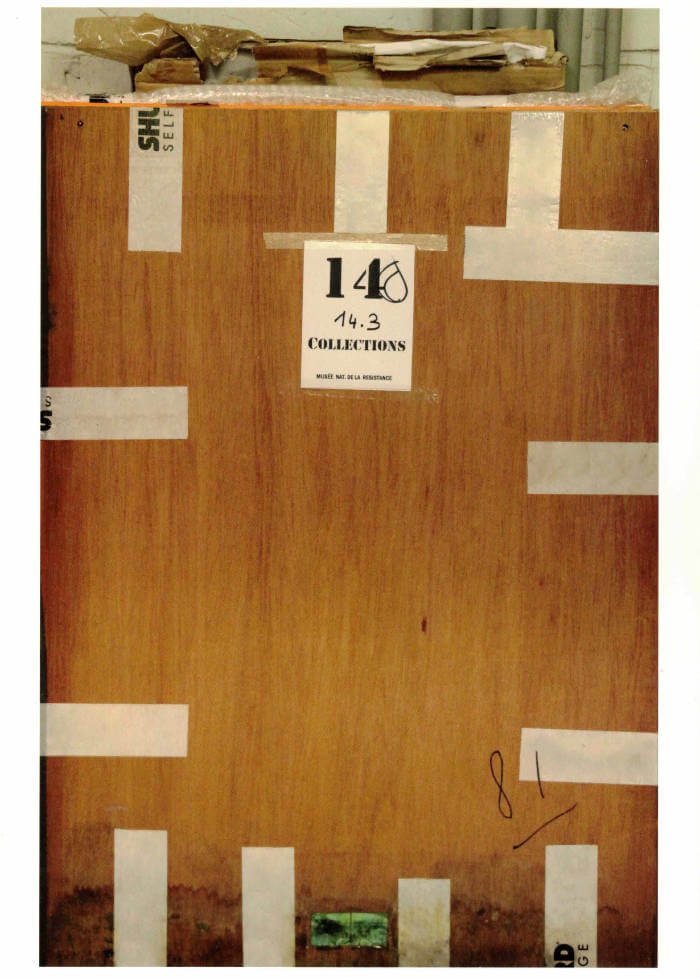
À Reclasser
This publication shows the waiting archive of the Museum of Resistance. The Brussels Museum of Resistance is undergoing renovation. Hidden in the basements of the civil affairs department, the stacked archive awaits a new home. Boxes filled with recognition files, photo albums, exhibition panels, books, flags, furniture, and other scenographic materials are scattered throughout the entire floor plan. The recently appointed archivist Samuel and historian Agnes are sorting through the archive pieces and are striving to ensure a future.

ZILCH
In banana boxes, Maxime Le Bon collects and stores a lot of documents in a jumble. Most of them are printed, cut out from newspapers, magazines, old publications, erratas and other fragments of texts. Added to this are drawings that he improvises - some of them torn or stained that he don't want to display or throw away. This collection of heterogeneous items is then being rearranged and slipped into plastic pockets where he stores them. Unstable and in constant change, this improbable archive grows with the years. It sedimented layers of experiences and constitutes this heterogeneous deposit from which can emerge all sorts of fragmentary narratives and accidental arrangements. The publication ZILCH brings together a selection of images from this extensive archive.
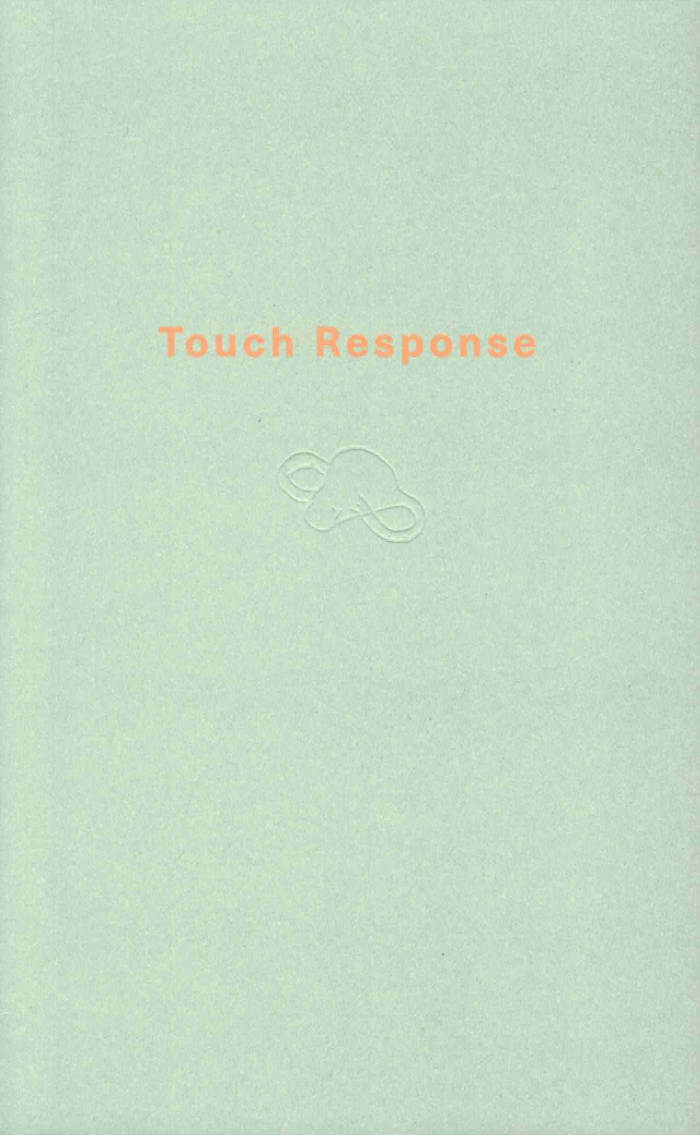
Touch Response
Touch Response is about lacking language and how to (not) interpret images. This is a book on vulnerability, as a description, prescription or side effect. It is made in a difficult period of fatigue and pain, mainly in the sofa in my living room, as a dialogue with myself and other invisible forces.
Drawings by Lore Smolders - visual artist
Interview with Birds WG - healer, writer, performance artist
Text editing by Isolde Vanhee and Joan Somers Donnelly

Who can afford to be critical?
‘Critical Designers’ produced by an increasing number of design schools are prompted to address social, political and environmental issues through their practices. Yet, who can afford to continue such effort after graduation?
In a dynamic style holding multiple voices, Who Can Afford To Be Critical? discusses the limits that affordability, class and labour impose upon the educational promise of holding a ‘critical’ practice. Why do we tend to ignore the material and socioeconomic constraints that bind us as designers, claiming instead that we can be powerful agents of change? In fact, where does our agency lie?
Instead of focusing on the dream of ethical work under capitalism, could we, instead, focus first on designers’ own working conditions, targeting them as one immediate site for collective action? And can we engage politically with the world not necessarily as designers, but as workers, as activists, as citizens?

What is post-branding?
Post-Branding empowers better design of public communication for civic and activist groups by replacing corporate branding’s predatory principles with a new set of strategies embedded in a new culture of craft. A new way of being and knowing, for a new way of relating with the world.
Brands aren’t just intruding on culture, they are our culture. They are the sponsored mechanisms for constructing and manipulating meaning and human identity. But should we cede such a fundamental human need to the market? If not, why not, and is there an alternative?
What is Post Branding? is a work of ‘practical theory’. It is a compact ‘pocket-book’ format publication composed of four main sections. The first, ‘DIS-BRANDED’, is a text of 20 short page-long chapters exposing the ideological underbelly and real-world impact of branding. The second, ‘MIXED MESSAGES’, is a provocative visual essay illuminating the texts’ main themes. The third, ‘MANUAL’, presents a framework for a critical alternative to corporate branding, humorously appropriating found instructional diagrams as a brand manual satire. This section also includes examples of completed contemporary projects that have implemented post-branding principles. The book concludes with ‘CONTEXT’, featuring a conversation with cultural theorist Brian Holmes and an argument with design historian Steven Heller.
Part design experiment, part critical theory, and part how-to-manual, What is Post-Branding? introduces a creative counter to branding’s neoliberal orthodoxy.
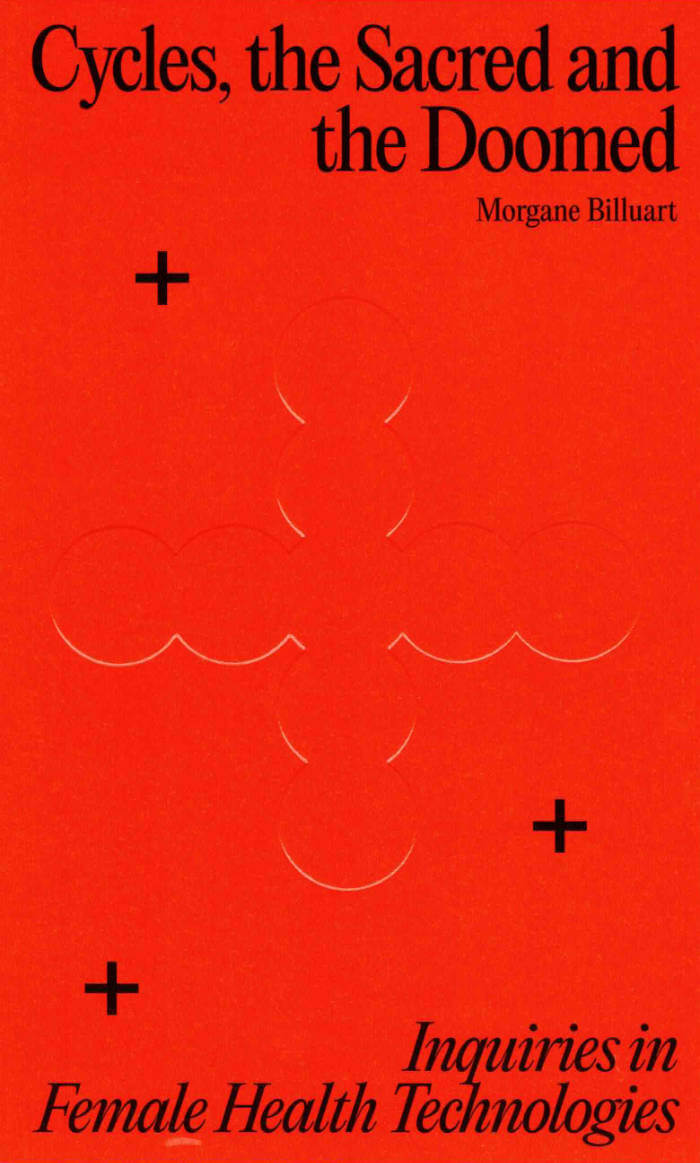
Cycles, the Sacred and the Doomed
In a world propelled by swift technological progress and perpetual obsolescence, women frequently find themselves adapting and altering their daily experiences in order to remain functional. In the 21st century, as technology purports to comprehensively assess and address women’s conditions and physical discomfort, Cycles, the Sacred and the Doomed delves deeply into the realm of female health technologies, revealing a space where science, holistic methods, and mythology converge. This book challenges the idea of combining ancient wisdom with modern innovation and takes readers on a multidisciplinary journey to explore the intricacies of female’s health.

Design Against Design
Design Against Design argues for the urgent necessity of critical engagement and political resistance through graphic practice. It draws on insights from the practice of LOKI, a small graphic design studio committed to working with social movements towards radical political change. With conversational interviews, personal and critical essays, and a wide-ranging selection of graphic works, this book unravels the real-world relationships, motivations and contradictions involved in a socially engaged design practice.
Both a passionate indictment of the discipline of graphic design, and a utopian love letter to its radical potential, Kevin Yuen Kit Lo’s collection of almost confessional, candid essays challenge the status quo of design writing. Design Against Design demands that we think more intimately about the politics of visual culture under contemporary capitalism and, importantly, how we can act against it.
Design Against Design is organized around four key themes: Critique presents a political-economic analysis of graphic design in relationship to capitalism and considers practical ways to resist it. Practice looks critically at how designers work towards (and sometimes against) social change within both a professional studio context and alongside social movements. Materiality focuses on the craft of graphic design; on language and typography, legibility, and illegibility, on the acts of speaking and making. Autonomy considers the emotional and relational aspects of graphic design, understanding that interdependence is intricately bound to any possibility for self-determination within and beyond design.
Featuring interviews with Philippe and Nancy Vermes, Sandy Kaltenborn, Kaie Kellough, Chadi Marouf and Sabine Friesinger, Sarah Auches, and Jenn Clamen.

échos
ÉCHOS is an intuitive investigation, redacted by using a compact digital camera. Those photos date from 2014 to 2018 and were shot in and around Brussels (up to 1350 km away), at any time of day or night, following a simple desire to look at things intensely and interpret signs playfully.
200 numbered copies
212 pages color photography printed in BE
With an introducing text by Constantin Carsoux
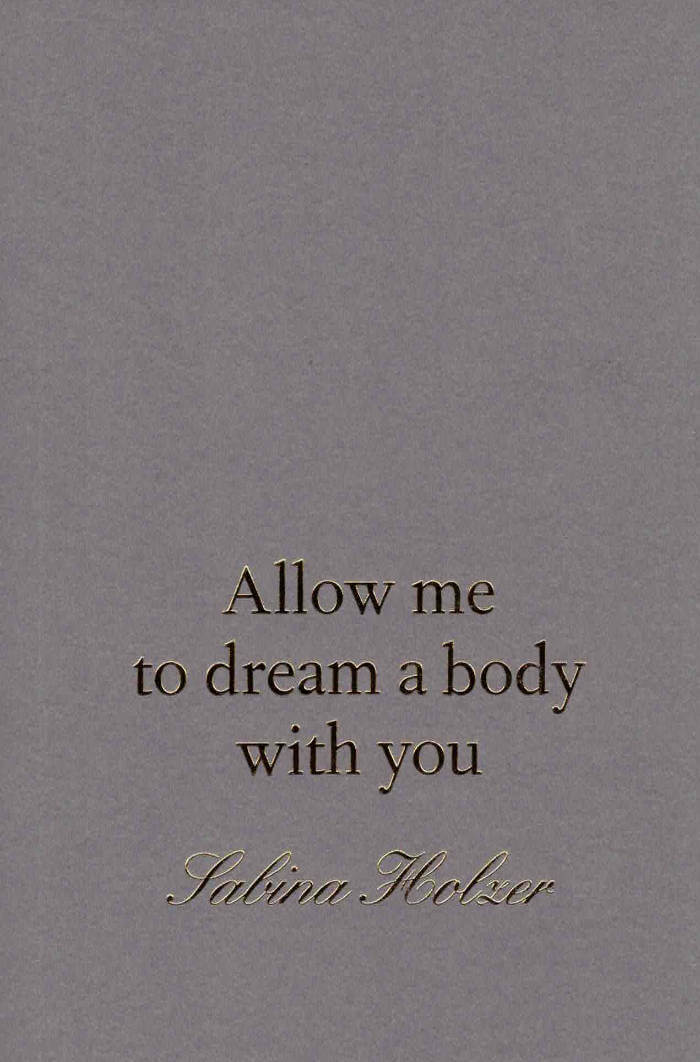
Allow me to dream a body with you
Writing from the body, from nervous impulses, sensations and gestures, but also from our being carried by matter, language and history, Sabina Holzer explores how writing may become ‘a way of singing and slip over into liminal, latent meanings and potentials.’ How to stay close to the body of the word? To perceive some of the multiplicity of our reality and ways of being, she incorporates somatic practices, ecology and new materialism, fables and science fiction in her writing. Allow me to dream a body with you gathers poetic essays and stories that delve into the fine grain of our corporeal entanglements and embeddedness. ‘Would an encounter between you and me be possible without all this?’
Sabina Holzer works in the field of expanded choreography. Her performances, interventions and texts explore the ecologies of human and more-than-human bodies with particular attention to movement and matter. She engages in practices of collaboration, philosophy, ecology, science fiction and poetry.
Graphic design: Michaël Bussaer
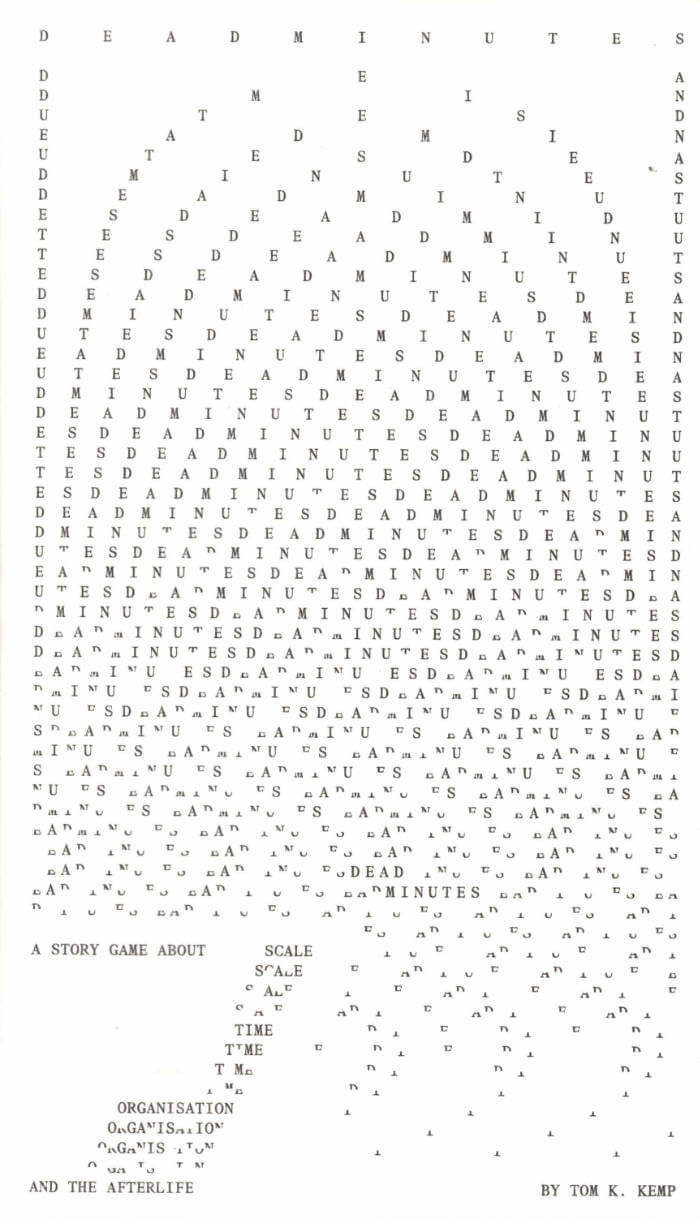
Dead Minutes
Dead Minutes is a storytelling game about systemic change in an undesirable afterlife. You, the players, will decide what this hell, underworld or land of the dead is like, what its problems are, how change happens there, and what the complications might be when altering something so big, involving so many dead people, over so much time. It’s a game about impossible seeming actions at impossible seeming scales, making difficult choices, and dealing with unexpected outcomes.
The first half of this book gives you everything you need to play a session of Dead Minutes, which takes 2-5 hours with 3-6 people.
The second half features an essay by Patricia Reed that expands on the concepts of heuristic fictions and vital zombies in relation to the afterlife, and a series of afterlife generating 'seeds' contributed by different types of writers - a demonic boardroom presentation by writer and art critic Habib William Kherbek, a ritual from horror game designer Samuel Clarice Mui Shen Ern, a premise by Arthur C Clarke award winning author Chris Beckett, and a letter from Selma Selman.
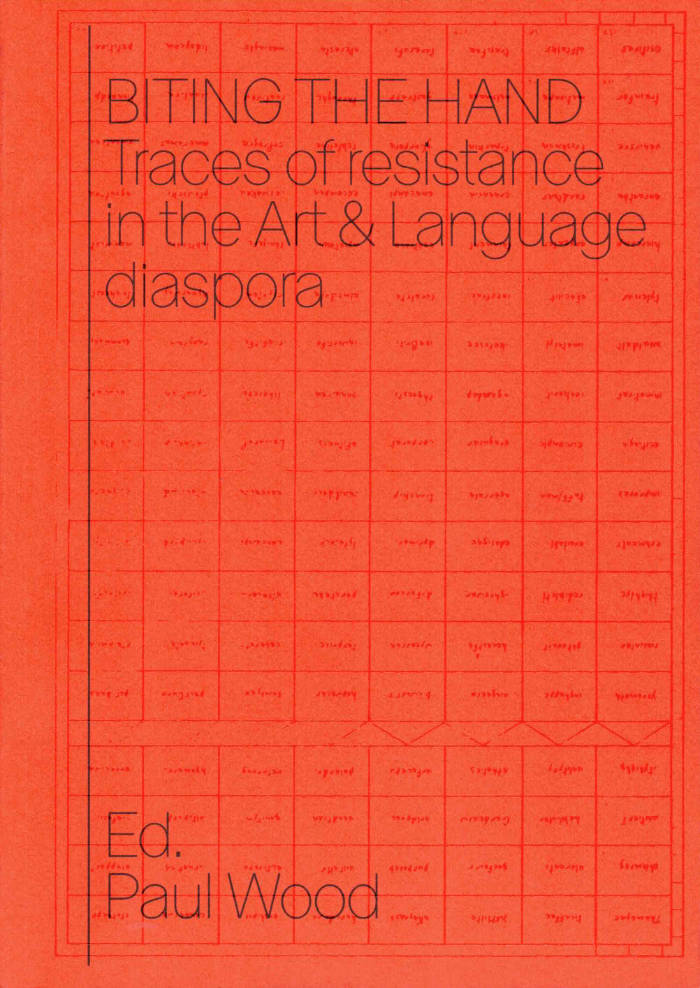
Biting the Hand – Traces of Resistance in the Art & Language diaspora
Extensive survey of the politically outward-looking Conceptualism emerging from Art & Language in the UK. Especially considering its critique of the norms of Modernist art practices in contemporary art, particularly practices of art education.
Edited, compiled and introduced by Paul Wood, Biting the Hand: Traces of Resistance in the Art & Language diaspora is about a dissident formation of artists active in the UK in the 1970s and 80s.
The book tells the story of artists engaging with a critique of then-contemporary modernist art education, who have embarked on a series of theoretical investigations which became increasingly politicised under the pressures of an evolving social crisis. Increased racism, unemployment and attacks on the organised working class all raised questions about how a critical art might respond.
By the late 1970s, these radical artists, mostly in the orbit of the Art & Language group, were producing posters and leaflets for a wide range of left-wing causes, as well as analyses of the politics of art and design education and the role of cultural ideology in maintaining consensus. In the 1980s, as Thatcherism tightened its grip, those involved went their separate ways into areas as diverse as media work, trade unionism, health and education.
Biting the Hand has three parts: a retrospective introduction setting the formation in its historical context, and two annotated documentary sections presenting examples of the work as both text and image, written and edited by Paul Wood.
It also includes a foreword by Sezgin Boynik, publisher, and an afterword by Ann Stephen, curator and art historian, further expanding on the book's subject.
For many years Paul Wood worked for the Art History Department of the Open University. His publications from that period include Conceptual Art (2000), Western Art and the Wider World (2013), and the four-volume anthology Art in Theory (1990-2020), co-edited with Charles Harrison and others.
Edited, compiled and introduced by Paul Wood.
Foreword by Sezgin Boynik; afterword by Ann Stephen.
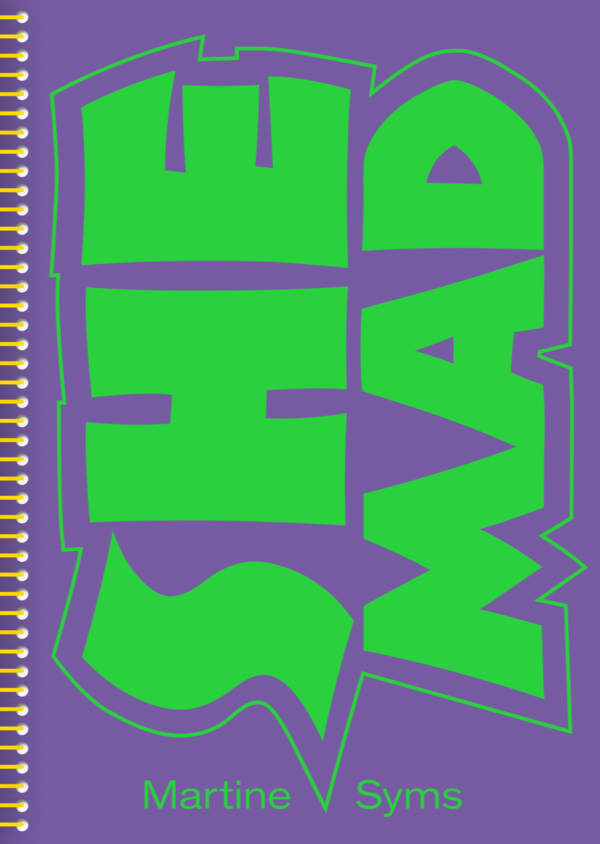
She Mad
She Mad gathers materials and documentation on Martine Syms' seminal episodic project of the same name. Each episode of this series takes a different format, using various narrative formats, from sitcoms to TikTok videos, and includes filmed footage as well as research materials. Each episode revolves around a protagonist, also named Martine—an overachieving, stoner graphic designer who lives in Hollywood and wishes she were an important artist.
The first episode Pilot for a Show about Nowhere (2015) merges a semi-autobiographical account of Syms' own life as a young black woman with a video essay-like narrative on the history of commercial television and its assumed target audiences. The episode Laughing Gas (2016) draws on early cinema, specifically the 1907 silent film of the same name by Edwin Porter, one of the earliest examples of a black female actress, Bertha Regustus, performing an independent role on-screen. Intro to Threat Modeling (2017) is told through email exchanges, screengrabs, and an avatar, outlining the effects of surveillance on subjectivity. The episode Bitch Zone (2020) takes us to an empowerment programme for teenage girls founded by supermodel and business mogul Tyra Banks.
Published on the occasion of the exhibition She Mad – Season One at Bergen Kunsthall, Norway and the Museum of Contemporary Art, Chicago, USA.
Martine Syms (born 1988 in Los Angeles) is an American interdisciplinary artist who has earned wide recognition for a practice that combines conceptual grit, humor, and social commentary. Her works explore how mass media shapes and frames identities and cultures. Drawing from early cinema, television, the internet, social media, and ambient footage produced by phones and surveillance, Syms addresses the ways in which representations of black identity and gender appear in the public imagination.
Edited by Axel Wieder.
Texts by Jadine Collingwood, William Pym, Axel Wieder.

This Is Not a Memoir
What do you call a memoir that isn’t? In This Is Not a Memoir, Janette Parris incisively narrates a journey through lost high street landmarks of East and South London in a series of detailed artworks blending map, archive and anecdote with deadpan humour. Part graphic novel, part recollection, and accompanied by an in-conversation between Janette Parris and Gilane Tawadros, this is an intimate exploration of what it means to have ownership of public space, from Wimpy to Woolworth’s via Canning Town. And somewhere in the gaps, in absent moments caught gazing at the sky or a kerbside, an impression of a life emerges–or is that just what she wants you to think?
“This book by Janette Parris tells a deflationary yet expressive coming-of-age story in the East End of London. While it may seem fun and superficial, its considerable power lies in how it moves through memories and moments in a witty and light-footed way presented as a roman-à-clef. This Is Not a Memoir is particular in the way it conjures a world of the 1970s and 1980s that is lost to most of London, yet still resonates with what it means to grow up as a working class young woman who ends up at art school and becomes an artist. It is a brave book to make, but one that will be remembered.”
— Rachel Garfield, artist, Professor of Fine Art at the Royal College of Art and author of Experimental Filmmaking and Punk: Feminist Audio Visual Culture in the 1970s and 1980s (2021)
Janette Parris is an artist who investigates the contemporary urban experience, using narrative, humour and popular formats including soap opera, stand-up comedy, musical theatre, pop mu-sic, cartoons, comics and animation. Parris has exhibited widely nationally and internationally for 25 years at spaces including TATE, The New Art Gallery Walsall, ICA, Kunsthaus Zürich, Hay-ward Gallery Touring, Art on the Underground and Royal Academy of Arts.
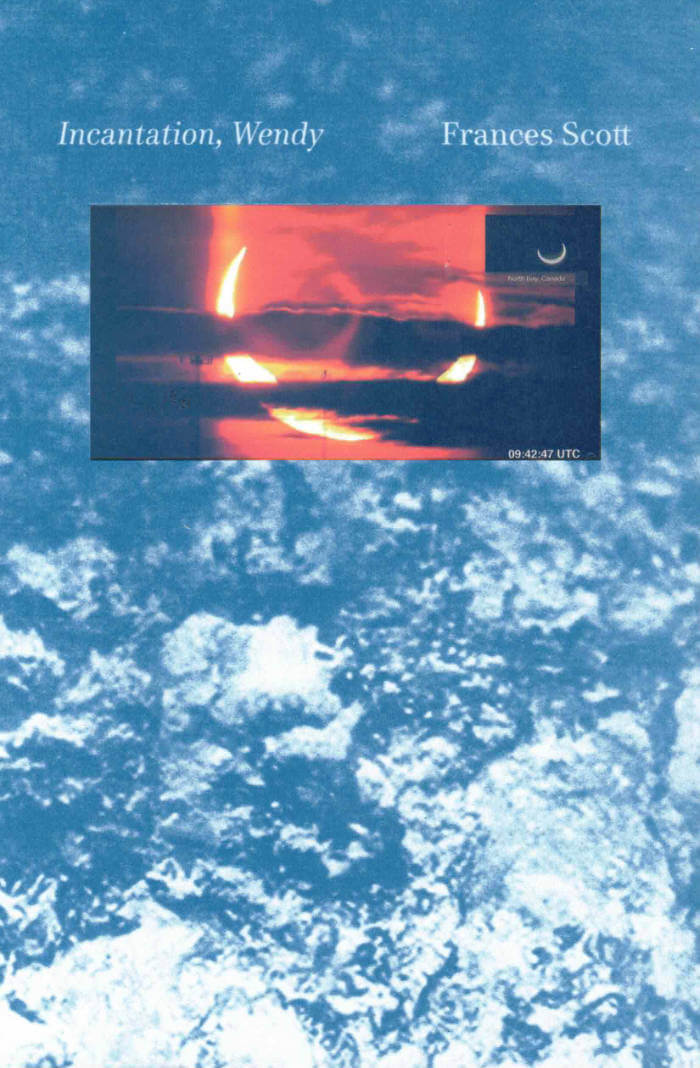
Incantation, Wendy
This book is an incantation for Wendy (2023), a film fan letter from artist Frances Scott to composer Wendy Carlos. Written contributions from Beth Bramich, Stine Hebert, Juliet Jacques, Tom Richards, Chu-Li Shewring and Dave Tompkins are accompanied by hand-drawn music scores, film stills and script notes produced during Scott’s research, and her moving-image work Valentina (2020), a rehearsal to camera with performer Valentina Formenti.
Incantation, Wendy precedes the film Wendy and meditates on Carlos as ‘The Original Synth’, moving across channels that speak of the unbounded voice in collaboration, synthesis and transition; through vocoders, archives, re-readings, light pulses, solar flares and cyclical returns; and in concert with horses, moons and a sun, eclipsing as it rises above the horizon.
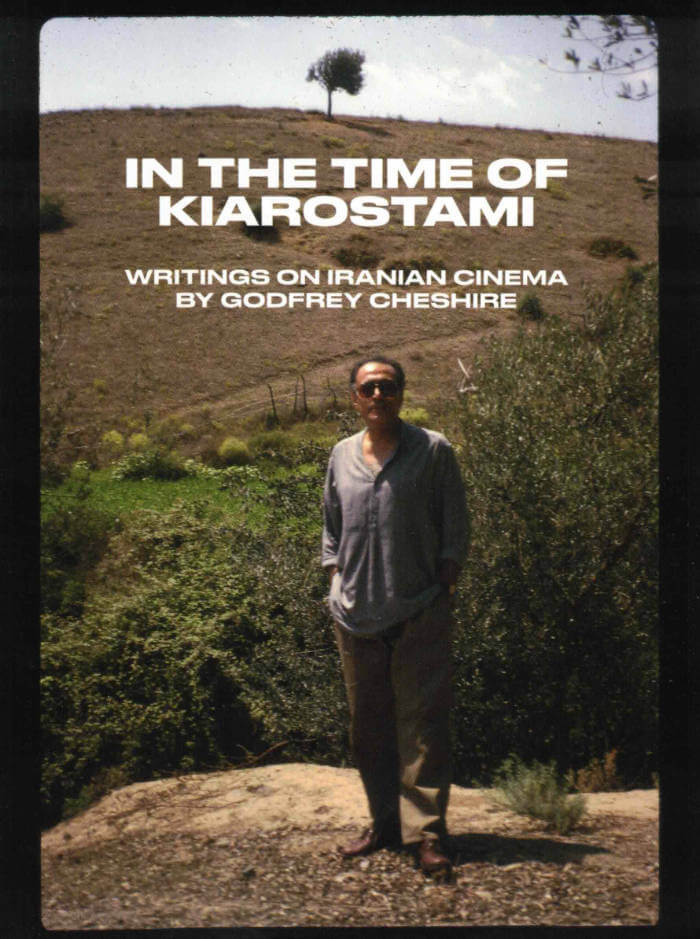
In the Time of Kiarostami: Writings on Iranian Cinema
“There is no better way to discover Iranian cinema than to immerse yourself in Godfrey Cheshire’s beautifully written 30 year personal cinematic journey. This is an important, informative and compelling book at this global political moment. It is vital to know these filmmakers of purpose through the perception of an outsider with whom we can identify and to lose ourselves to the wonder, humanity, and artistry of a culture and cinema that demands our attention now more than ever.” — Michael Barker, Sony Pictures Classics